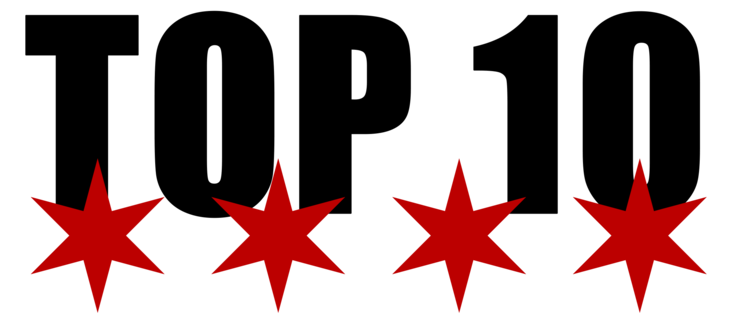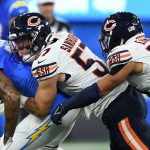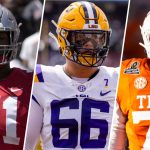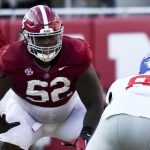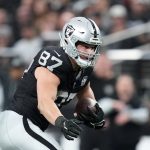The Chicago Bears have had three different “mini-seasons” in this wild 2020 campaign. They started 5-1, with only one truly impressive win in that span. They then proceeded to lose six games in a row, including prime time embarrassments to the Rams, Vikings, and Packers, and a heartbreaking mind-number to Detroit at home.
However, since falling to 5-7, they’ve won back-to-back games, and looked impressive doing so. A 36-7 destruction of the Texans at home started the turnaround, and a 33-27 de facto playoff win on the road at Minnesota solidified the Bears as “still alive” for a postseason spot.
A few extra thoughts on Bears-Vikings:
1a. In a season that's seen a six-game losing streak, barring an all-time collapse in Jacksonville, the Bears' Week 17 showdown vs. Green Bay at Soldier Field will matter.
That seemed impossible three weeks ago. Credit to Matt Nagy & Co.
— Dhruv Koul (@DhruvKoul) December 21, 2020
There are a couple of playoff scenarios for the Bears, but all of them require help:
Subscribe to the BFR Youtube channel and ride shotgun with Dave and Ficky as they break down Bears football like nobody else.
- Bears win out, Arizona loses one — Bears get seventh seed.
- Bears win one, Arizona loses two — Bears get seventh seed.
- Bears win out, Arizona loses at least one, Tampa Bay loses two — Bears get sixth seed.
Long story short, they do not control their own destiny. What they can control, however, is beating the Jaguars at TIAA Bank Stadium this Sunday, and setting up a showdown at home against Green Bay in Week 17. That’s all they should focus on right now.
With that, let’s reach into this week’s Bears Mailbag. Thanks to everyone who submitted questions. Follow me on Twitter @DhruvKoul to continue the conversation.
Bears Mailbag
Why did it take Matt Nagy so long to implement an offense that Mitch can thrive on as we seen in the last 3 weeks ?
— Gilly Batts (@gildamonsta) December 22, 2020
Good question. I think it requires a significantly lengthy look back.
Before becoming the Bears’ head coach, Matt Nagy’s entire NFL career was spent learning Andy Reid’s system. He saw success wherever he went — in Philadelphia and again in Kansas City. To him, this offense worked. Donovan McNabb? It worked. Alex Smith? It worked. Patrick Mahomes? It worked. And when the Chiefs had success with him calling plays in KC in his final year there, it further reinforced his perception of the scheme.
Enter Chicago. When he was hired, he wanted to modernize the Bears’ offense. To him, that meant implementing Reid’s system. He had a QB he thought had an upwards trajectory at the time (Mitch Trubisky), and in his first season teaching and implementing the scheme, the Bears won 12 games. It was reasonable to think the offense would grow in Year 2.
So then comes 2019. The offense doesn’t take the necessary steps forward, and Nagy begins to sour on Trubisky, realizing Mitch doesn’t have the brain/processing power to absorb and process Reid’s West Coast scheme in the NFL. So in the offseason, he revamped his coaching staff and began to design/implement a newer scheme for Trubisky (the Shanahan/McVay offense) to help bring out more production. He also, however, went and acquired a more reliable backup option — in case Trubisky failed, he’d have someone who can implement Reid’s/his scheme so the learning curve wouldn’t be as high in a COVID-19 world.
Fair thought.
The 2020 season began, and the Bears’ offense looked drastically different from 2019. The Bears were more efficient moving the ball early on, but mistakes still piled up and derailed the offense from making the requisite progress. That’s when Nagy decided to bench Trubisky to see if he could unlock more production from his (more trusted) offense with a QB he thought could run it well enough (Nick Foles).
Here’s what happened in the Foles games:
- Furious comeback against Atlanta to win.
- Rough loss to Indianapolis, but it could’ve been explained by the Bears running into a buzz-saw (a great defense) and game planning specifically for Foles.
- Big prime time win over Tampa.
- Big road win over the (at the time) 3-2 Panthers.
- Awful loss in Los Angeles.
- Tough, overtime loss to the Saints where the offense looked OK.
- Awful loss in Tennessee. What happens? Nagy gives up play calling to try something different.
- Awful loss against Minnesota. They head to the bye week, realizing Foles just isn’t working out, and neither is “his” scheme.
- After the bye week, Mitch is back, the Weeks 1-2 scheme is back, and the offense looks better.
In my opinion, this is a relatively fair and understandable timeline for Nagy to realize his scheme was not infallible with the players he had, and he needed to make changes. And he did! And he has stuck with it so far!
I understand the frustration fans have with the offense, but coaches are not fans and they can’t afford to overreact to every result. If that were the case, players would be benched and folks fired on a weekly basis. And besides, given everything listed out here, are these not signs of a coach learning and growing?
Is the key to the offense playing better all rooted in getting the OL (especially interior) solidified? Or, has Lazor’s play calling made it easier for the OL. I know, kind of a chicken or egg question.
— Darren Bizarri (@dbiz20) December 23, 2020
I think it’s a combination of things happening all at once. Injuries really hurt the offensive line early in the year — losing James Daniels hurt a lot, as did losing Bobby Massie (surprisingly!). It took them some time, but they finally found a combination (during the bye week) that seems to work for them on the OL. Sam Mustipher has been a revelation at C, Cody Whitehair going back to LG has helped him become a dominant lineman again, Alex Bars has filled in admirably at RG, and Germain Ifedi’s shift over to RT has worked wonders for him, too, despite him not working out at the same position in Seattle.
At the same time is when they reverted the scheme back to the Shanahan/McVay style that they rolled out in Weeks 1-2. It’s something that clearly works better with the OL they have, and the skill players they have. Fewer formations/personnel substitutions, the blocking schemes, and relying on David Montgomery (a beast of a RB) has helped things out a lot.
To answer your question overall, they’re both important to the success of the offense, but the scheme changes are helping highlight some good players’ strengths and it’s showing up on the field.
It really depends on who the best player available is and how far they are from a QB they really want. IMO, they should attack OT in the first round. Fortifying this OL is a wise investment, no matter who the QB is.
— Dhruv Koul (@DhruvKoul) December 22, 2020
If I'm the Bears, I try to see if I can pry Marcus Mariota away from the Raiders.
In the draft, the Bears will be drafting too low to pick Zach Wilson, so I'd take a chance on Mac Jones in Round 2.
— Dhruv Koul (@DhruvKoul) December 22, 2020
The overall scheme is sustainable, especially when it comes to the running game. But the QB will need to process from the pocket at some point, especially when better defenses employ spies.
— Dhruv Koul (@DhruvKoul) December 22, 2020
The type of self-scouting it would've taken to make this determination could only have taken place during the bye week. Otherwise, game-week prep is all about old game vs. new opponent. True self-scouting is difficult without the bye week benefit.
— Dhruv Koul (@DhruvKoul) December 22, 2020
The Bears should be looking for a QB in the draft (where depends on players available, of course) regardless of what happens with Mitch. If he keeps this up against JAX and GB, the Bears should at least consider a "prove it" deal for Trubisky. But they shouldn't commit more.
— Dhruv Koul (@DhruvKoul) December 22, 2020
He's doing it right now. Bill Lazor is calling the plays, but this is still Nagy's offense. Just redesigned from what he wanted it to be.
— Dhruv Koul (@DhruvKoul) December 22, 2020
You'd be surprised by how much winning can heal things. The major question is what kind of offers will Trubisky get on the open market? The Bears may decide they want him back on a "prove it" deal, but they have to be careful to not negotiate against themselves.
— Dhruv Koul (@DhruvKoul) December 22, 2020
I think they should, and they may do so anyway. Sometimes, a change is just required. And the Bears really do need someone with a football mind making football hires in the future.
— Dhruv Koul (@DhruvKoul) December 22, 2020
The NFL should adopt Premier League style rules. Do away with divisions, the top 12-14 teams make the playoffs. Relegation should be allowed with an NFL-sponsored "minor league." Point differential is the tiebreaker.
Tanking is stupid and condoning it is stupid.
— Dhruv Koul (@DhruvKoul) December 22, 2020
A few options to consider…
Trade: Marcus Mariota, Matthew Stafford
Free Agency: Trubisky, Ryan Fitzpatrick
Draft: Zach Wilson, Mac Jones
— Dhruv Koul (@DhruvKoul) December 22, 2020
It's important to keep an eye on Buster Skrine's status, but the Bears really like what Duke Shelley and Kindle Vildor did against a tough set of Minnesota weapons on the road.
I'd imagine Shelley starts over Skrine. But if Jaylon Johnson is healthy, he's starting at CB2.
— Dhruv Koul (@DhruvKoul) December 22, 2020
Pace has largely done a good job outside of R1. Sure, he has plenty of misses. But these big names are redemption stories for him:
Goldman, Whitehair, Kwit, Howard, Daniels, Miller, Nichols, Montgomer, Cohen, Jackson, Kmet, Johnson, Mooney, Shelley.
— Dhruv Koul (@DhruvKoul) December 22, 2020
I'd be somewhat open to the idea on a one-year, prove-it deal (maybe a club option for 2022 if necessary). Anything more than that and I'd walk.
The question is, will Trubisky be open to returning? I think that's the biggest factor.
— Dhruv Koul (@DhruvKoul) December 22, 2020
Drafting a QB and drafting the right QB in the right spot are two different things. Reaching for a QB is never the right strategy.
That said, I'd still imagine Mitch is gone next year, so the Bears need to come up with a plan quickly.
— Dhruv Koul (@DhruvKoul) December 22, 2020
The Bears would probably be better off letting Cody Whitehair (who already signed a big extension) stay at LG and asking James Daniels to move to RG to give it a shot.
A Whitehair-Mustipher-Daniels interior seems solid.
Bars *could* play RT, but he did play some LT in college.
— Dhruv Koul (@DhruvKoul) December 22, 2020
It depends on what happens in these final two games. They have to beat JAX convincingly, and they have to compete (at the very least) with GB. If they do that, I see Nagy returning at the very least. It's TBD with Pace.
— Dhruv Koul (@DhruvKoul) December 22, 2020
It depends on how the board shakes out, but if there is a QB they like available when they are on the board (and the value of picking of QB is close to another position), they should certainly take the QB. Nothing matters more than getting that position right.
— Dhruv Koul (@DhruvKoul) December 22, 2020
No. Different scheme requiring different personnel. Frankly, I don't think Lovie's scheme will work in today's NFL.
— Dhruv Koul (@DhruvKoul) December 22, 2020


